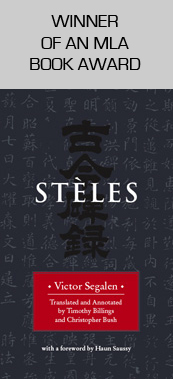Volume 2: Chinese Sources and Contexts
Download

Contents / Preface / Acknowledgments
Chinese Sources and Contexts
Unpublished
Stèles
Critical
Notes, Sources, and
Contexts for Unpublished Stèles
Segalen’s
Draft of “To the Scholars of
the Extreme Occident”
Dates
of
Composition and Revision
Bibliography
About
the
Authors
Stèles
/ 古
今碑錄, Vol.
2 in
one file (1.9MB).

